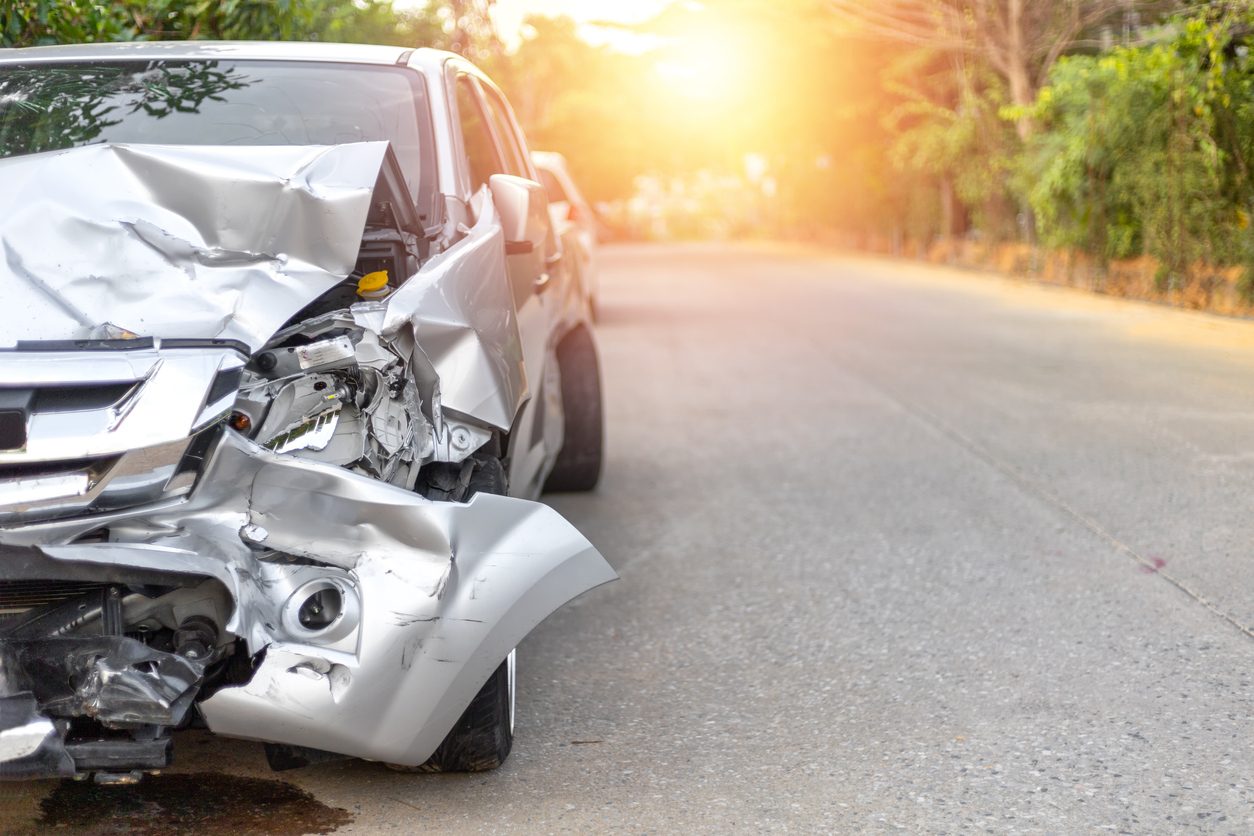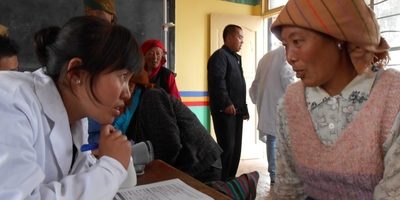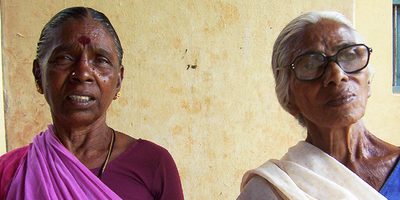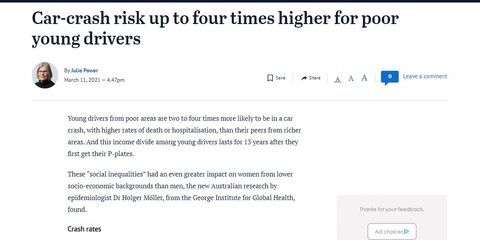
Bad start for young drivers in poorer communities follows them into adulthood, study shows
Young drivers from areas of low socio-economic status continue to have higher rates of motor vehicle crashes into adulthood than those from more affluent areas, according to a new study.
This divide was not explained by known crash risk factors, such as the amount of driving time each week, risky driving behaviours, extent of driver training and drug and alcohol use. The largest differences between socioeconomic groups were observed for crashes that led to hospitalisation, those occurring in country areas and on streets with a speed limit of 80km per hour or more.
Men were more likely to crash than women in all socio-economic groups, but the study showed for the first time that relative social inequalities affecting crashes are similar for women compared with men. However, these inequalities were even larger for women in relation to single vehicle crashes.
Lead author Dr Holger Moeller from The George Institute for Global Health said that to reduce this gap, non-medical factors that influence health - like where and how people are born, grow, work, live, and age, and the wider factors that shape the conditions of daily life - needed to be considered.
“While drivers of low socioeconomic status were known to be more likely to be injured or die in a crash, we’ve now shown this higher risk is sustained over a 13-year period into their adult years,” he said.
“Road transport injury prevention measures need to address the underlying causes of social inequalities to reduce the crash inequalities that we saw in our study,” he said.
Motor vehicle crashes are one of the leading causes of deaths and injury worldwide, with the number of annual road traffic deaths reaching 1.35 million in 2018, according to the World Health Organization.
According to government figures 1,195 Australians died in road crashes in 2019, up by just over five percent from the previous year. Two thirds occur in regional and remote areas, with one third occurring in a major city area.
To investigate the effect of young drivers’ socioeconomic status (SES) on their risk of crashing as adults and whether this differed by type of crash or by gender, researchers from The George Institute for Global Health and UNSW School of Population Health followed a sample of drivers up to 13 years after they first obtained their driver’s licence.
They used data from 20,806 drivers aged 17–24 years holding their first independent motor vehicle driver’s licence from NSW, the state with the largest number of registered passenger vehicles in Australia. This information from 2003 was linked to records of crashes, admissions to hospital, deaths and causes of death across the state up until 2016.
During the study period, a total of 2166 women (19.1%) and 2136 men (22.6%) were involved in a crash. Of these, 139 (1.2%) women and 79 (0.8%) men were hospitalised due to crash-related injuries and three women and six men died in car crashes.
Drivers who lived in areas of low SES as young adults had a higher risk of car crash during adulthood compared with those who lived in areas of high SES.
Dr Moeller said that while the underlying reasons for these inequalities were not well understood, there were a number of possible explanations.
“Drivers from disadvantaged backgrounds tend to drive older and less safe vehicles,” he said.
“Also, a large proportion of drivers of low SES live in rural and remote areas, which already have higher rates of crashes resulting in hospitalisation and death.”
He said there was also an emerging body of research showing that growing up in poverty may affect mental processes involved in learning, manipulation of information, and reasoning.
“It’s quite possible that poverty might have a negative effect on attention and decision-making while driving and might therefore contribute to crashing,” he said.
Study director and co-author Professor Rebecca Ivers, Head of UNSW School of Population Health says the findings point to the much bigger and pervasive issue of the direct impact of poverty on health.
“People living in poverty are less likely to have access to safe road infrastructure and are having to rely on older cars and may travel longer distances,” she said.
“Having specific licensing interventions will only go so far – we must also address the upstream causes of inequities and poverty and ensure all communities have equitable access to infrastructure and resources that will keep them safe and healthy.”









